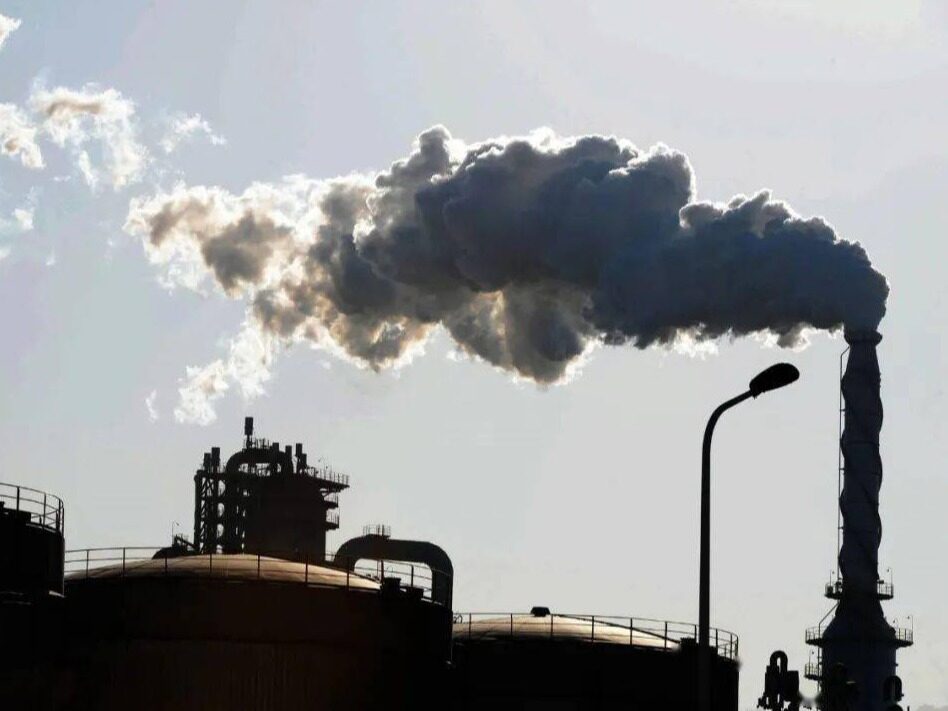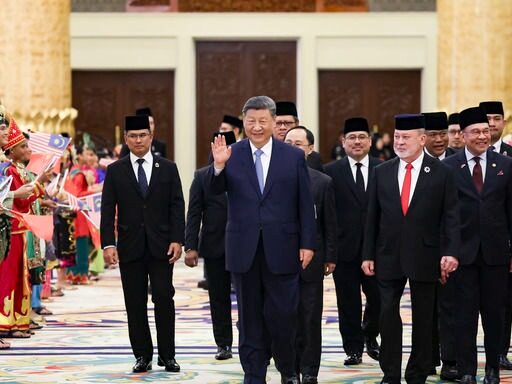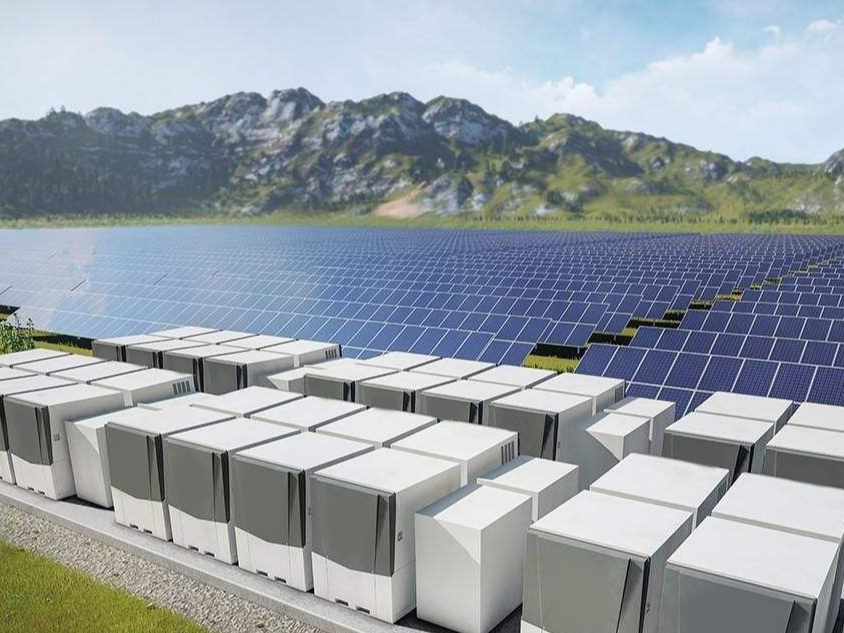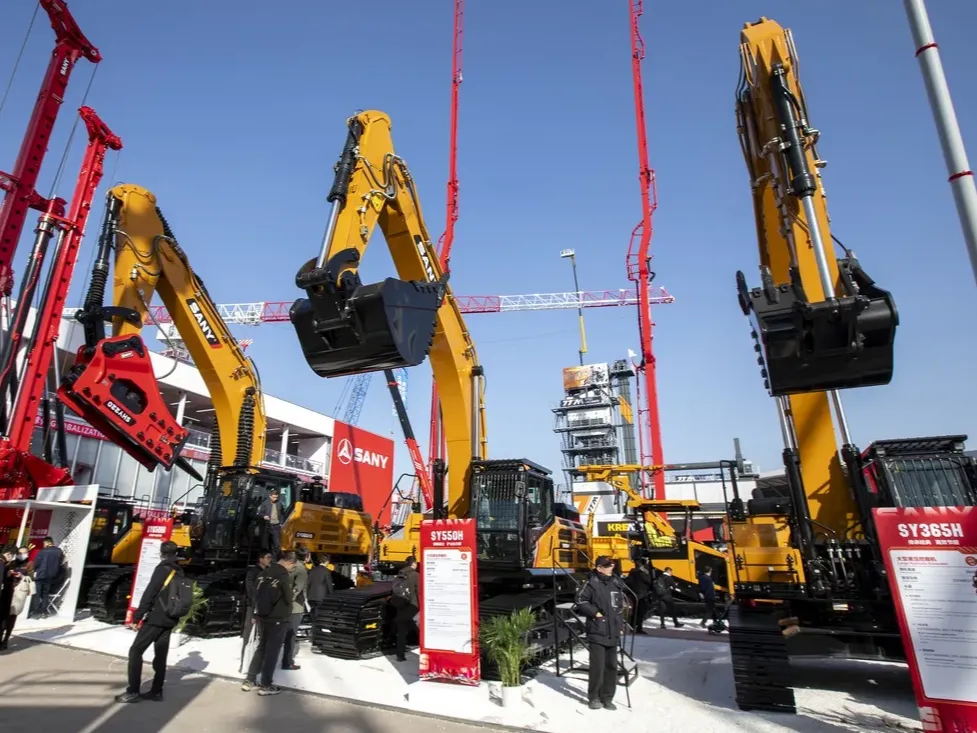- The carbon trading pilot will greatly promote the reduction of greenhouse gas emissions by enterprises in the pilot provinces and cities

At 9:15 on July 16, 2021, the launching ceremony of the national carbon market was held in Beijing, Shanghai, and Wuhan at the same time, and the high-profile national carbon market officially began online trading. In fact, the construction of the national carbon market is based on the pilot experience of the previous ten years. Zhao Yingmin, the vice minister of the Ministry of Ecology and Environment, pointed out at a briefing held by the State Council Information Office on July 14 that the carbon trading pilots in seven provinces and cities have effectively promoted the reduction of greenhouse gas emissions by enterprises in the pilot provinces and cities, and have also explored the system for the construction of the national carbon market. , Trained talents, accumulated experience, and laid the foundation."
Ten years of piloting to lay the foundation
From the 7 local carbon market pilot projects in 2011, China's carbon market has experienced 10 years of exploration. In 2011, the National Development and Reform Commission announced the establishment of pilot carbon emissions trading in two provinces and five cities including Beijing, Tianjin, Shanghai, Chongqing, Guangdong, Hubei, and Shenzhen. After nearly two years of preparations, the Shenzhen Carbon Emissions Exchange was established in 2013, and several other pilot trading markets have been established within one year.
In the past few years, carbon trading pilots in these seven provinces and cities have covered nearly 3,000 key emission units in more than 20 industries, including power, steel, and cement. According to data previously released by the Ministry of Ecology and Environment, as of June 2021, the cumulative trading volume of carbon market quotas in pilot provinces and cities reached 480 million tons of carbon dioxide equivalent, with a turnover of approximately 11.4 billion yuan.
At present, the first batch of the national carbon market is only included in the power generation industry, but during the "14th Five-Year Plan" period, the remaining steel, nonferrous metals, petrochemicals, chemicals, building materials, papermaking, electric power and aviation of the eight high-energy-consuming industries may all be included in the national carbon market. market place.
This approach is more in line with international experience. According to estimates by Soochow Securities, the future quota allocation method may be based on the baseline method, that is, based on unit output, energy efficiency rather than total output may become a key factor. Allowances between different industries can be traded with each other to form a unified national carbon market.
According to Zhao Yingmin, in conjunction with the compilation of the national emission inventory, the Ministry of Ecology and Environment has organized and carried out data accounting, submission and verification of high-emission industries such as power generation, petrochemical, chemical, building materials, steel, non-ferrous metals, papermaking, and aviation for many years. . Therefore, the data accounting, submission and verification of these high-emission industries also have a relatively solid foundation. In order to make basic preparations for expanding the coverage of the national carbon market, the Ministry of Ecology and Environment has entrusted relevant scientific research units and industry associations to research and put forward relevant industry standards and technical specifications that meet the requirements of the national carbon market.
Establish a national carbon market
Carbon emissions have certain externalities. For the economic entities and consumers that cause emissions, the consequences of carbon emissions that will take years or even decades to appear will not cause immediate and obvious negative effects on themselves, so reduce them. The internal motivation of the platoon is not enough. By quantifying and capitalizing carbon emissions through economic means, and having a direct impact on production and consumption costs through market mechanisms, such externalities can be transformed internally and become the internal motivation for the main body to actively reduce emissions.
To this end, the first thing to do is to quantify and price carbon emissions. The Emission Trading System (ETS) is one of the carbon pricing mechanisms, and the other is called a carbon tax. Both have a clear carbon price, and compared to carbon emissions trading, which requires a set of policies and trading systems, the cost of carbon tax policy is lower. This is because taxes can be levied directly on related products or services after a certain carbon price, and the specific emissions are determined by the market.
Since it is difficult for the government to accurately predict the "tolerance" of enterprises to this price when setting the carbon tax price, the carbon tax does not have a strong control over the total emissions, and the efficiency of emission reduction is low.
As a market-based energy saving and emission reduction policy tool, the total amount of greenhouse gas emission limits for various industries in the carbon emission trading system are generally set by the government, and emission rights are issued to the emission control entities in the form of quotas. my country’s current quota calculation method is relative total control. The total amount of quotas for the year is determined according to the total amount of power generation, and then the total amount of quotas is proportionally distributed according to the situation of each main unit's generating units. Based on the possible mismatch between the actual emissions of the controlling body and the quota, the quota can flow and exchange in the market to generate economic benefits. At the same time, through the gradual tightening of the total quota, the main body of emission control is driven to spontaneously carry out the low-carbon transformation of the energy structure, and the emission reduction efficiency will be higher than that of the carbon tax.
Under such a mechanism, the total amount of emissions is determined, and the carbon price is a floating price formed in the process of allowance trading. Huabao Securities believes that these two policies can be used in combination because they can complement each other in terms of coverage and price mechanisms.
Zhao Yingmin said that the role and significance of the national carbon market in China's carbon peaking and carbon neutrality are mainly reflected in several aspects:
The first is to promote high-emission industries controlled by the carbon market to achieve green and low-carbon industrial structure and energy consumption, and promote high-emission industries to take the lead.
The second is to release price signals for carbon emission reduction and provide economic incentives to guide funds to industries and enterprises with high emission reduction potential, promote green and low-carbon technological innovation, and promote breakthroughs in cutting-edge technological innovation and green and low-carbon development in high-emission industries. Transformation.
The third is to build a national carbon market offset mechanism, promote the increase of forestry carbon sinks, promote the development of renewable energy, assist regional coordinated development and ecological protection compensation, and advocate green and low-carbon production and consumption methods.
The fourth is to rely on the national carbon market to provide investment and financing channels for industry and regional green and low-carbon development transformation to achieve carbon peak and carbon neutrality.
Why is the power industry?
Zhao Yingmin said that the reason why the national carbon market chooses to use the power generation industry as a breakthrough is based on two considerations:
One is that the power generation industry directly burns coal, so the carbon dioxide emissions of this industry are relatively large. More than 2,000 key emission units in the power generation industry, including self-provided power plants, emit more than 4 billion tons of carbon dioxide annually. Therefore, the power generation industry is the first startup industry to give full play to the positive role of the carbon market in controlling greenhouse gas emissions. .
Second, the management system of the power generation industry is relatively sound and the data foundation is relatively good. Because you want to trade, you must first have accurate data. Accurate and effective acquisition of emission data is a prerequisite for carbon market trading. The power generation industry has a single product, complete emission data measurement facilities, a high degree of automated management in the entire industry, standardized data management, and easy verification, and easy allocation of allowances.
Judging from international experience, the power generation industry is the first choice for inclusion in the carbon market of various countries. Carbon dioxide emissions are large and coal consumption is high, so this industry is included first, which can simultaneously play a synergistic role in reducing pollution and carbon.
The "China Energy and Power Development Outlook 2020" report released by the State Grid Energy Institute shows that as the level of terminal electrification continues to increase, power demand will maintain a sustained and rapid growth before 2035, and some carbon emissions will gradually shift from the terminal energy sector to electricity In the industry, electric energy will gradually occupy the core position of end-use energy.
Zhao Yingmin introduced that in the next step, the Ministry of Ecology and Environment will speed up the revision of the national standards for the accounting and reporting of greenhouse gas emissions in related industries in accordance with the mature principle of one approval and one release, study and formulate allowance allocation schemes by industry, and healthy operation in the carbon market of the power generation industry. In the future, we will further expand the scope of the carbon market to cover industries, and give full play to the important role of market mechanisms in controlling greenhouse gas emissions, promoting green and low-carbon technological innovation, and guiding climate investment and financing.
Peng Wensheng, chief economist of CICC, believes that the analysis based on green premium shows that for the high-emission and low-premium power and steel industries, their carbon emissions account for 62% of the total emissions, which is more suitable for adopting carbon market pricing. mechanism. For low-emissions, high-premium transportation, chemical and other industries, it may be more suitable to adopt a carbon tax pricing mechanism. Therefore, in the future, a carbon market trading mechanism with "auction + futures" as the core can be built, an auction-based trading mechanism can be implemented in the allocation of allowances, and derivatives such as futures can be introduced in the trading of allowances.
In addition to China, the world’s largest European carbon market, the latest carbon market reform plan released on the 14th is also implementing the idea of “industry”. A separate new carbon market.
The focus of upstream and downstream supervision determines the focus of the carbon market in the supply chain. Generally speaking, upstream regulation focuses on the implicit emissions from natural resource extraction, such as coal mining or oil extraction, even if these emissions were not burned at the time. Downstream regulations target end users in the supply chain, such as consumers. The EU adopts this approach to manage from the upstream of the supply chain, using a separate market to test the effect of operation, and also to ensure that it will not impact the stability of the existing EU carbon market.
How to connect local pilots to the national carbon market
Previously, in the pilot areas, the allocation of carbon emission allowances, settlement plans and trading rules in the region were mainly formulated through local regulations or local government regulations.
According to the deployment of the Ministry of Ecology and Environment, the national carbon market will adopt the "two-city model"-Shanghai will be responsible for the construction of national carbon trading institutions and systems, and Wuhan will be responsible for the construction of national carbon registration and settlement institutions and systems. The "Interim Regulations on the Management of Carbon Emissions Trading Management (Draft Revised Draft)" for public comments at the end of March clarified that after the formal regulations are promulgated and implemented, no new local carbon emission trading markets will be established, and the existing pilot trading markets will gradually Included in the national carbon market, at the same time, the key emission units that have been included in the scope of the national carbon market transaction subject will no longer participate in the local carbon emission rights trading market of the same type of greenhouse gas and the same industry.
At a briefing on the 14th, Li Gao, director of the Department of Climate Change Response of the Ministry of Ecology and Environment, stated that the local carbon market should gradually transition to the national carbon market, and it is necessary to avoid a situation where a company participates in both the local carbon market and the national carbon market. In terms of the specific transition timetable and roadmap, further studies should be conducted based on the development of the national carbon market and the actual situation of local pilot projects. With the establishment of a national carbon market, we no longer support new local pilots. Existing pilots can be further deepened on the existing basis, while making relevant preparations for the transition to the national carbon market.
In fact, carbon trading pilots in various places have been operating for nearly ten years, and there are certain differences in trading systems and procedures. A smooth transition to the national carbon market may face a series of challenges. Entities that have participated in local pilot carbon trading have been After being included in the national carbon market, should the local quotas held be carried forward or cancelled? The quotas issued by the pilots vary, and the carbon price is high or low. How should these local quotas be carried over to the national carbon market? Should companies that do not meet the national inclusion standards continue to trade in local pilot exchanges or should they be excluded? How will the settlement of carbon emissions trading in 2019 and 2020 be arranged? Will companies still settle settlements in accordance with the local pilot scheme?
How high is the carbon price
According to Zhang Xiliang, director of the Institute of Energy, Environment and Economics of Tsinghua University and head of the national carbon market overall design expert group, after the national carbon trading market is launched, the carbon price should not be lower than the cost of reducing one ton of carbon dioxide. From 2020 to 2030 It should be US$7 (about 50 yuan) to US$15. It will probably rise to US$25 in 2035, and it should be US$115 in 2050. When China achieves carbon neutrality, that is, in 2060, its own emissions are already very small, and the cost of abatement will be further increased to more than 300 US dollars.
The forecast results of the "China Carbon Price Survey 2020" jointly released by the China Carbon Forum and ICF International Consulting Company are even more optimistic. The report believes that the average price of the national carbon market is expected to rise from 49 yuan/ton in 2020 to 71 yuan/ton in 2025, and to 93 yuan/ton in 2030. In 2025, the total market value of the national carbon emission allowance trading market may reach 284 billion yuan.
Zhao Yingmin said that the national carbon market has not yet started, and it is impossible to assert the specific value of the carbon price. However, judging from the operation of 7 local pilots across the country, the weighted average carbon price in the past two years has been around RMB 40.
It is worth noting that the limits on the rise and fall of China's carbon market have also been finalized. According to the "Announcement on Matters Related to National Carbon Emission Trading" issued by the Shanghai Environment and Energy Exchange on June 22, the transaction price of the listing agreement transaction is determined within ±10% of the closing price of the previous trading day; for bulk agreement transactions The transaction price is determined within ±30% of the closing price of the previous trading day.
At the same time, there are detailed regulations for different transaction types: the maximum declared volume of a single transaction for a listing agreement transaction should be less than 100,000 tons of carbon dioxide equivalent, and the transaction price is determined within ±10% of the closing price of the previous trading day. However, the minimum declaration quantity of a single transaction is greater than or equal to 100,000 tons of carbon dioxide equivalent, which is a block agreement transaction, and the transaction price will be determined within ±30% of the closing price of the previous trading day.
Zhao Yingmin stated that carbon price "can not only demonstrate my country's determination and strength to achieve carbon peak carbon neutrality, but also provide effective price incentive signals for carbon emission reduction companies." He said that carbon price is formed through market transactions, so Fluctuations in carbon prices are also normal, but violent fluctuations or excessively high or low carbon prices are not conducive to the long-term stable operation of the carbon market. Too high or too low a carbon price is not good. Too low a carbon price will dampen the enthusiasm of companies to reduce emissions; too high a carbon price will also cause some high-carbon companies to overburden.
In the design of the national carbon market-related system, the Ministry of Ecology and Environment considers policy measures such as improving the allocation of quotas and introducing offset mechanisms to guide market expectations, so as to form a reasonable carbon price. Editor/He Yuting
Comment
 Praise
Praise
 Collect
Collect
 Comment
Comment
 Search
Search














Write something~